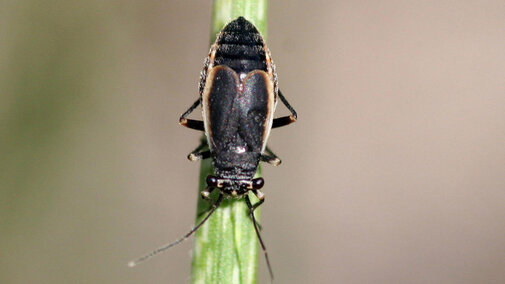Irrigating First Cutting Alfalfa
Alfalfa is a tough, drought-tolerant perennial crop with rooting depths down eight feet or more. Depending on deep soil profile moisture during drought, some varieties can move into a dormancy and survive up to 45 days without rainfall. However, forage yields drop dramatically, since alfalfa requires about six inches of root available water to produce one ton of forage per acre.
So, what irrigation strategy is recommended for alfalfa under extreme moisture stress prior to the first cutting? Remember that once perennial fields lack spring moisture, it is hard to catch up with irrigation during the hot summer season due to high ET (evapotranspiration) water needs. Also, stressed alfalfa — which may be dropping leaves prematurely — may be cut before the recommended one-tenth bloom development stage to salvage yield. This timing disruption may impact target irrigation, which is usually applied just prior to the first cutting to increase regrowth tonnage for the next cutting.
Moving forward, an advantage of early alfalfa cutting is that water use will drop sharply because transpiration is lower when the leaf foliage is removed. Following first cutting, irrigation might be delayed slightly in fields where weeds could respond quicker to the moisture than alfalfa regrowth.
Otherwise, full water irrigation or rainfall target amounts will be typically six to seven inches of water for each subsequent cutting. Spring water usage may only be one-fourth inch per day but will rapidly increase as summer temperatures rise. Peak water alfalfa usage in July and August can extend beyond the normal one-third inch per day (or two inches per week) to half inch per day during extreme stress times.
Black Grass Bug and Army Cutworm
In forage, there have been reports of black grass bugs causing damage. They primarily cause damage to wheatgrasses, such as crested or intermediate wheatgrass. These dark-colored bugs are roughly one-fourth inch long with large eyes that protrude from the side of the head. Feeding damage from this insect can reduce forage production, so scouting for early detection can help reduce future widespread damage.
Because these insects tend to feed at night and remain close to the soil surface during the day, you will probably see signs of damage before you see the insects themselves. Look for whitish spots, or stippling, that begin at the leaf tip and gradually move down the plant. You can also use a sweep net to determine if they are present in your field.
While there aren’t set economic thresholds for black grass bugs, they can be managed through proper forage management, including intense spring and fall grazing, and hay removal. Foliar insecticides, such as Malathion, can be used in areas that have been severely impacted by black grass bug the previous year. Keep in mind that annual management is generally not necessary as it takes several years for black grass bug populations to reach economically damaging levels.
Finally, a note about army cutworm. The adult moths that are currently a nuisance in our homes and other structures are actually a good sign for producers. Most of the cutworm caterpillars that can cause damage to alfalfa and other crops in March and April have pupated or have already emerged as adults, which do not damage crops. While the adults will return in late summer to lay eggs, larval activity through October generally does not cause economic damage.
Short Pasture Concerns
A cool spring and dry weather have resulted in lower-than-expected pasture production in parts of the state. With summer upon us, even ample moisture now may not return pastures, especially those that are cool-season dominated, to full productivity. So, what can we do to stretch a limited forage supply?
While annual forages that prefer cool temperatures like brassicas and small grains may not be an option to plant, those needing summer forage are right on time to get heat-loving species like sorghums, sorghum-sudan hybrids, millets and sudangrass in the ground. These annual grasses can produce large quantities of forage for harvest. Different species lend themselves to different harvest methods, so know how you plan on feeding or grazing before you plant.
Another way to stretch pasture is through improved utilization. Under typical grazing conditions, we only plan on cattle consuming 25% to 30% (harvest efficiency) of a pasture’s production. Half is left for plant health while another quarter is fouled or trampled. Something as simple as a single wire electric cross fence can improve harvest efficiency to 35%. When paired with a back fence, the rest provided to previously grazed plants can aid in recovery and provide regrowth for use later in the year.
Finally, begin looking at herd records now and make a plan for destocking later on in the year if conditions continue to deteriorate.
Planning for a short forage year is not a task we want to undertake in June but may be needed this year. If the worst does come to pass, looking at other forage options, better utilizing pasture and planning for destocking now will be worth the effort.

